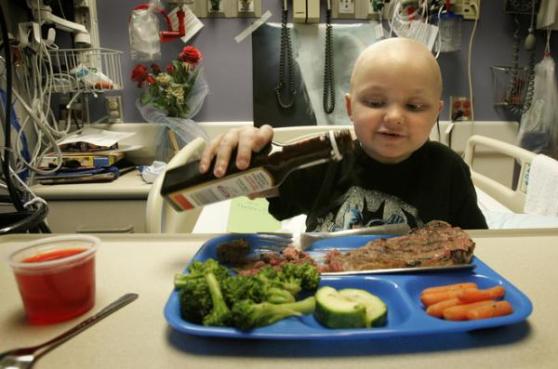Milwaukee Journal Sentinel reporters Mark Johnson and Kathleen Gallagher spearheaded the project, which mixes bleeding-edge personalized medicine with the story of a grumpy, spirited little boy. A kind of medical procedural, the three print stories follow doctors and parents as they try to make treatment choices when they don’t even know what problem they’re trying to fix. “One in a Billion” revolves around its written elements but makes extensive use of video, chats, and graphics as bells and whistles for those who want to explore elements of the story more deeply.

Johnson and Gallagher explain technology unknown to most readers, keeping the story humming along without making the medical science mysterious. When the doctors narrow the possible mutations causing the problem down from 16,124 to 1, the writing brings a sense of scale – and drama – to the accomplishment:
For the first time, his disease begins to make sense. If Worthey and Dimmock are correct, the holes in Nicholas’ intestine, the ravaged colon, all of it stems from a single misplaced base in the long chain of his DNA.
On the X chromosome, on the gene XIAP, the rest of humanity has the sequence thymine-guanine-thymine.
Nicholas has thymine-adenine-thymine. In the single-letter shorthand scientists use, he has what amounts to a typo, an A instead of a G.
The bases in this sequence make an amino acid, the 203rd in a chain of almost 500. That amino acid is supposed to be cysteine, and has been in all humans examined to this point.
But in Nicholas, the one-letter change produces an entirely different amino acid, tyrosine.
His tyrosine is part of a long chain that makes a protein, also called XIAP. This protein has two important jobs: it blocks a process that makes cells die and it helps prevent the immune system from attacking our intestine.
In Nicholas, however, the protein is made incorrectly. In his body, the immune system is at war with his intestine.
Since the human genome is composed of more than 3 billion base pairs, Nicholas’ mutation represents the smallest possible error in a vast blueprint. Imagine one letter out of place in the 55 million-word Encyclopaedia Britannica online edition.
Even this image does not do justice to Nicholas’ terrible luck. Not only is his misspelling unique among the human genomes examined, it is unique among the animal genomes Worthey checks. Fruit flies, rats, mice, cows, chickens, chimpanzees – every organism she can find makes cysteine at this position.
To Worthey, the extreme rarity of his mutation across the species carries an unmistakable message.
“If all of those organisms have (cysteine) at that position, then clearly it’s important because over all that time it has never been allowed to change,” she says, “(If it did) something bad obviously happened to stop that line from evolving any further. So everything has a cysteine.”
Except Nicholas.
Scientists find what they’re looking for. After treatment for a second, life-threatening condition discovered during the sequencing, Nicholas gets out of the hospital. Yet the real-life story is not over.
“One in A Billion” navigates the treacherous waters between a medical tale that ends on a happy note and the realization that genetic sequencing may or may not lead to any effective treatment for the original condition that ravaged Nicholas’ body for two years. In a remarkable responsibility to the larger story, Gallagher and Johnson raise issues brought up by genetic research in a moving way without pretending we have any clear answer on how to resolve them.
[For more, read our Q&A with reporters Mark Johnson and Kathleen Gallagher, in which they talk about their research, the newsroom bet that they would turn on each other, and their low-tech method for making sure that if they “both got hit by a beer truck,” their editors would be able to find everything.]


